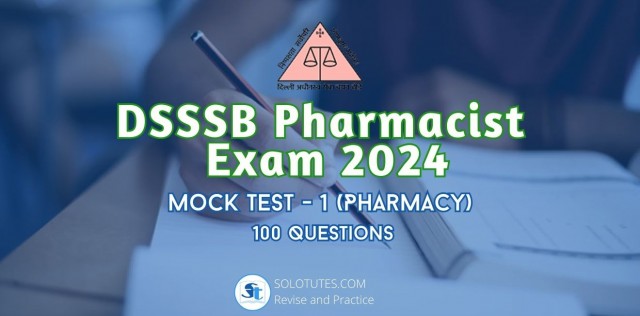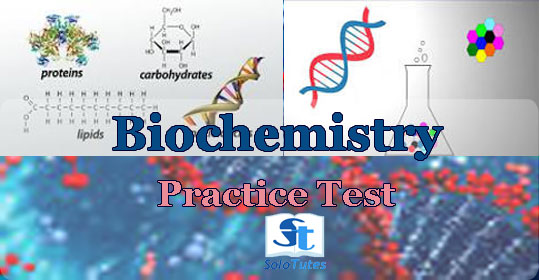Check your Progress and get points for your performance
Login & Start the Test
OR
Start the Test Without Login
OR
Scroll Down to See Questions
Click on Any Option to check right Answer and Explanation.
1 of 25
Q.1 Rhodophyceae is called red algae because of the pigment
- Fucoxanthin
- Phycoerythrin
- Carotenoids
- Chlorophyll c
2 of 25
Q.2 Which of the followings plant material is an efficient water imbibant?
- Agar
- Cellulose
- Lignin
- Pectin
3 of 25
Q.3 In a monoecious plant
- Male and female sex organs are on the same individual
- male and female gametes are of two morphologically distinct types
- Male and female sex organs are on different individuals
- All the stamens are fused to form one unit
4 of 25
Q.4 The seedless vascular plants whose sporophytes are larger than their small and independent gametophytes are
- Pteridophytes
- Angiosperms
- Gymnosperms
- None of these
5 of 25
Q.5 Which of the following is a liverwort?
- Sphagnum
- Funaria
- Marchantia
- Polytrichum
6 of 25
Q.6 Transgenic plants are the ones
- Grown in artificial medium after hybridization in the field
- Produced by a somatic embryo in artificial medium
- Generated by introducing foreign DNA in to a cell and regenerating a plant from that cell
- Produced after protoplast fusion in artificial medium
7 of 25
Q.7 Which of the following plants is used extensively for the study of photosynthesis?
- Amaranthus
- Asparagus
- Chlorella
- Sunflower
8 of 25
Q.8 Which of the following is used to grow microbes?
- Laminaria
- Gelidium
- Chlorella
- Sargassum
9 of 25
Q.9 Isogamous condition with non-flagellated gametes is found in
- Chlamydomonas
- Spirogyra
- Volvox
- Fucus
10 of 25
Q.10 Gymnosperms produce neither flower nor fruit because they do not possess
- Embryo
- Ovary
- Ovule
- Seed
11 of 25
Q.11 Rhodophyceae is called red algae because of the pigment
- Fucoxanthin
- Phycoerythrin
- Carotenoids
- Chlorophyll c
12 of 25
Q.12 In moss stomata appears on
- Capsule
- Leaves
- Stem
- All of these
13 of 25
Q.13 The gametophyte is not an independent, free-living generation in
- Pinus
- Polytrichum
- Adiantum
- Marchantia
14 of 25
Q.14 In gymnosperms, the development of pollen grains occurs in
- Strobili
- Microsporangia
- Megasporangia
- Macrosporangia
15 of 25
Q.15 Ribbon shaped chloroplasts occur in
- Ulothrix
- Spirogyra
- Chlamydomonas
- Riccia
16 of 25
Q.16 Antheridia and Archegonia are sex organs of
- Moss
- Mucor
- Spirogyra
- Puccinia
17 of 25
Q.17 Iodine is found in
- Spirogyra
- Laminaria
- Polysiphonia
- Chlorella
18 of 25
Q.18 Bryophytes are called amphibians of plant kingdom because
- These plants live in soil and depend on marine organisms for asexual reproduction
- These plants live in soil and depend on water for sexual reproduction.
- These plants live in water and depend on land animals for sexual reproduction
- These plants live near water bodies.
19 of 25
Q.19 Which one of the following is a vascular cryptogram?
- Cedrus
- Equisetum
- Ginkgo
- Marchantia
20 of 25
Q.20 Pinus differs from mango in having
- Tree habit
- Green leaves
- Ovules not enclosed in ovary
- Wood
21 of 25
Q.21 In chlorophyta the mode of sexual reproduction is
- Isogamy
- Anisogamy
- Oogamy
- Isogamy, Anisogamy and oogamy
22 of 25
Q.22 An evolutionary characteristic is found in selaginella:
- Presence of ligule
- Heterophilly habits
- Sporangia present in cone
- Heterospory
23 of 25
Q.23 By which type of leaf is found in selaginella
- Aligulate and microphyllous
- Ligulate and megaphyllous
- Ligulate and microphyllous
- Aligulate and megaphyllous
24 of 25
Q.24 Bioluminescence is a phenomenon associated with
- chrysophyta
- phaeophyta
- pyrrophyta
- chlorophyta
25 of 25
Q.25 Yeast is different from penicillium and Rhizopus in being
- Acellular
- Unicellular
- Having unseptate hyphae
- multicellular
.png)



















.jpg)
.png)







 Pharmacognosy Aptitude Test
Pharmacognosy Aptitude Test  Evolution : class 12th biology practice test | MCQs for NEET
Evolution : class 12th biology practice test | MCQs for NEET